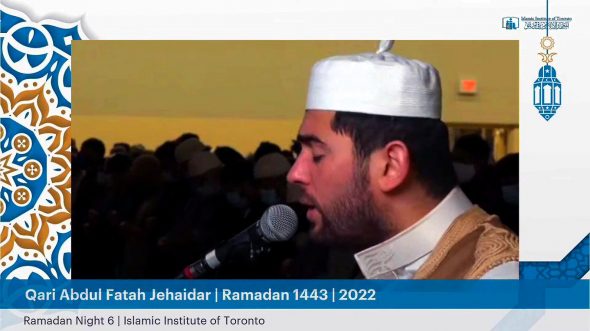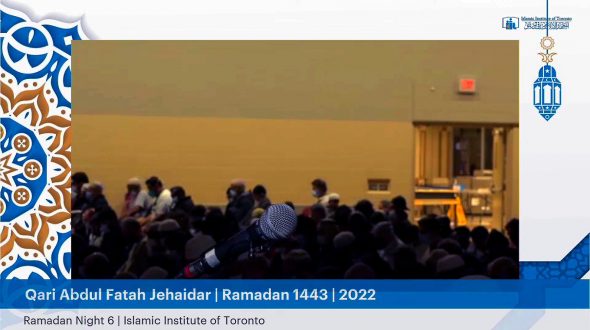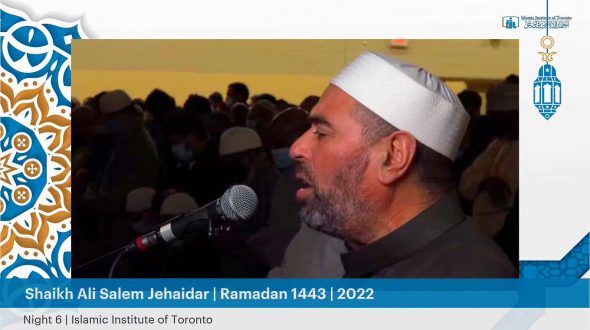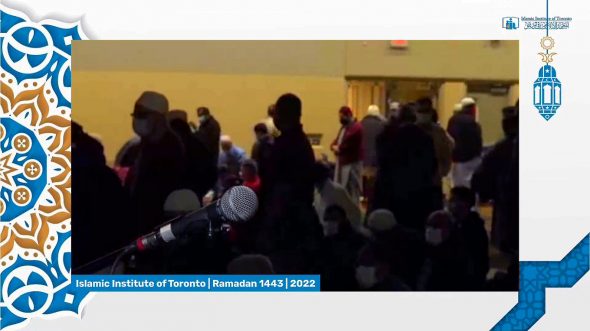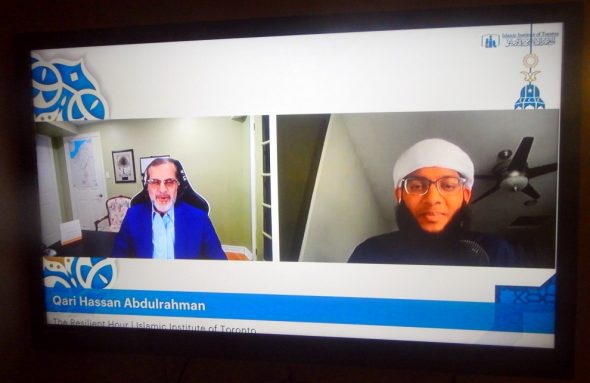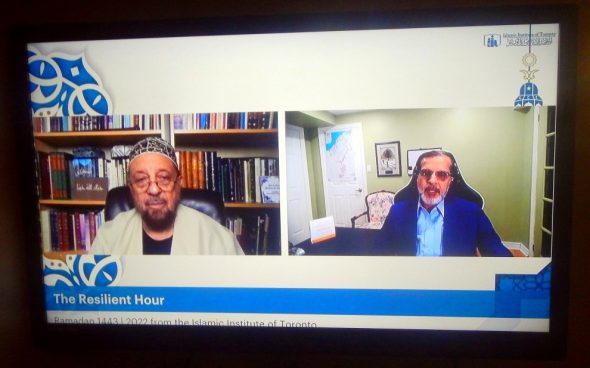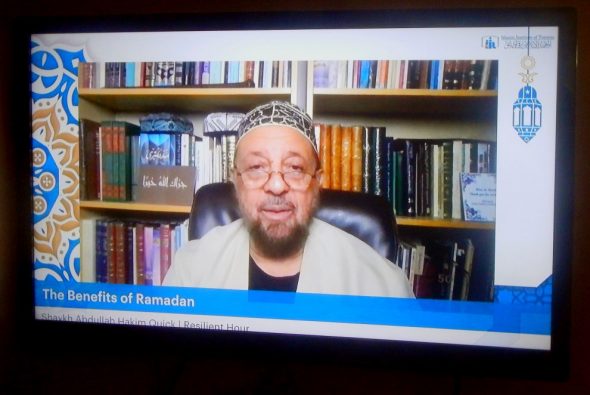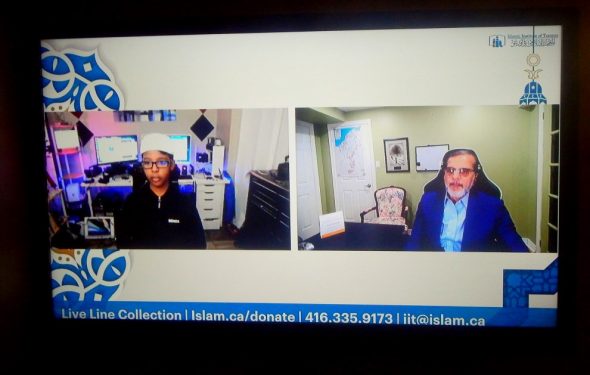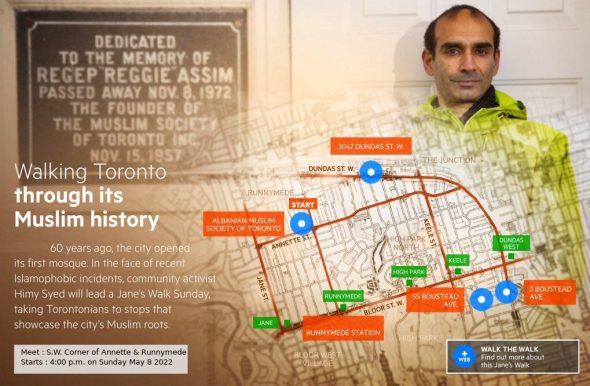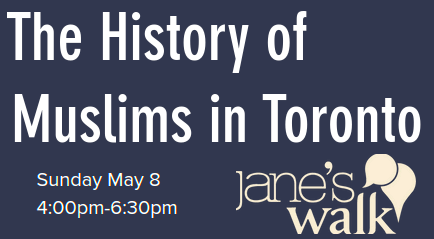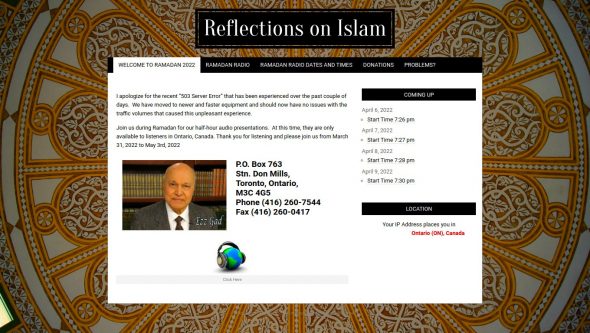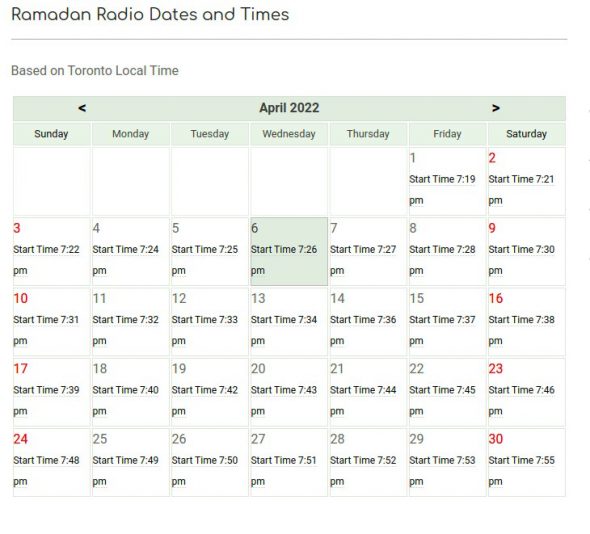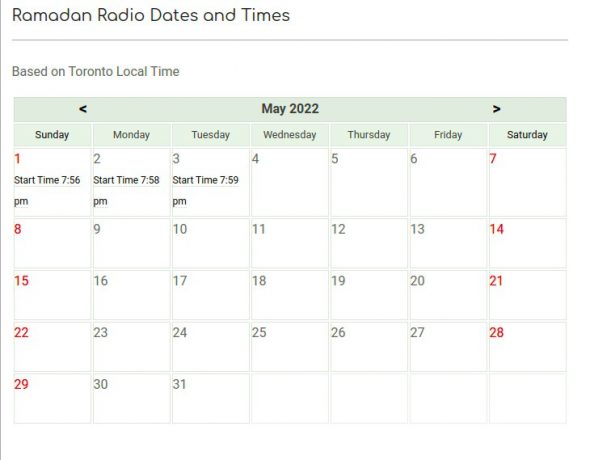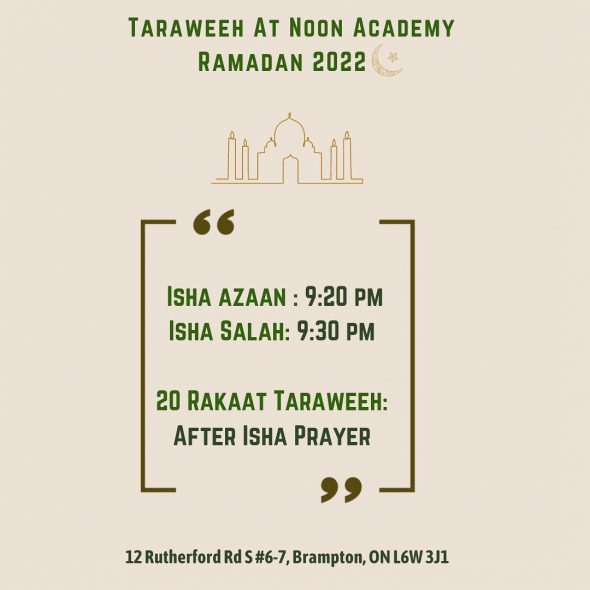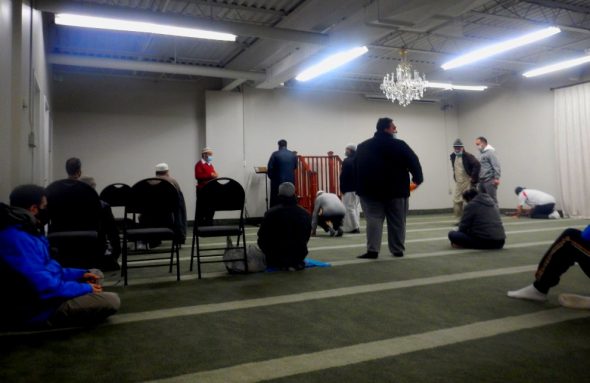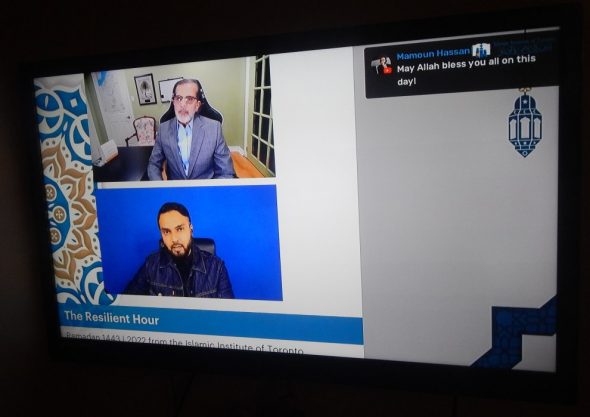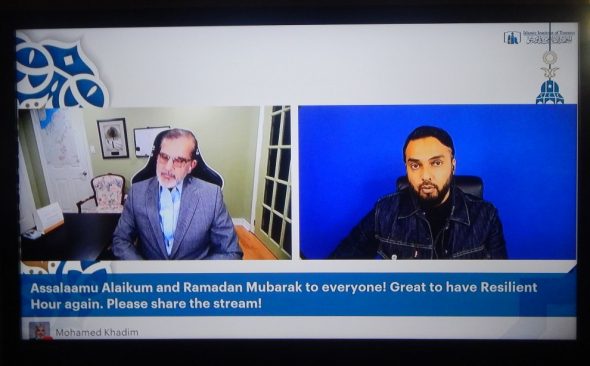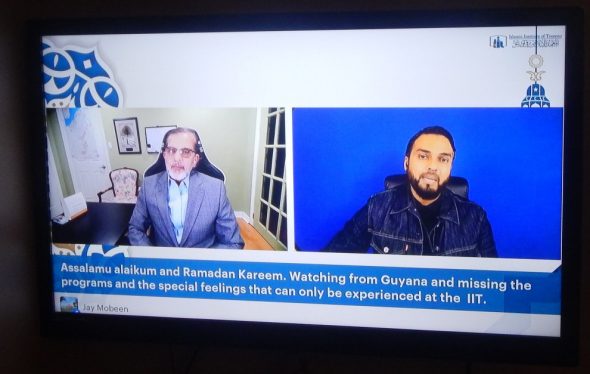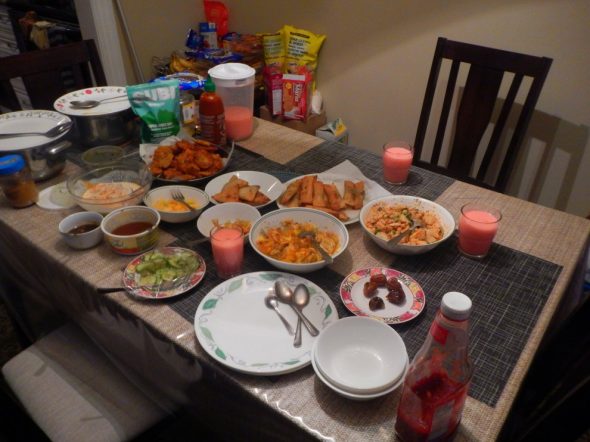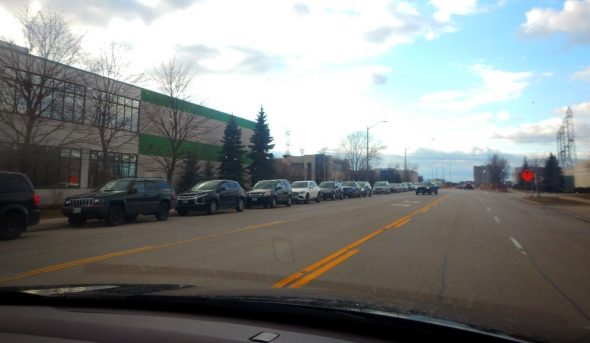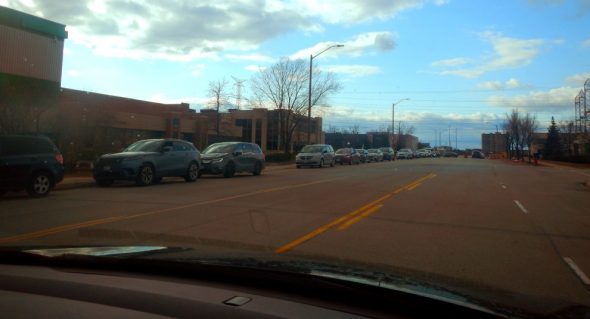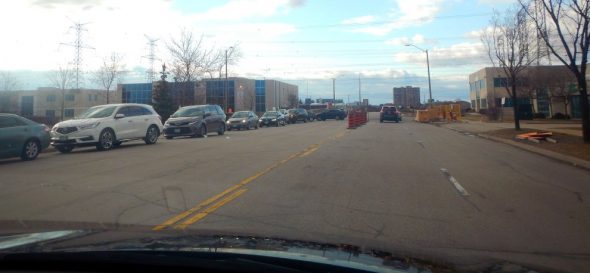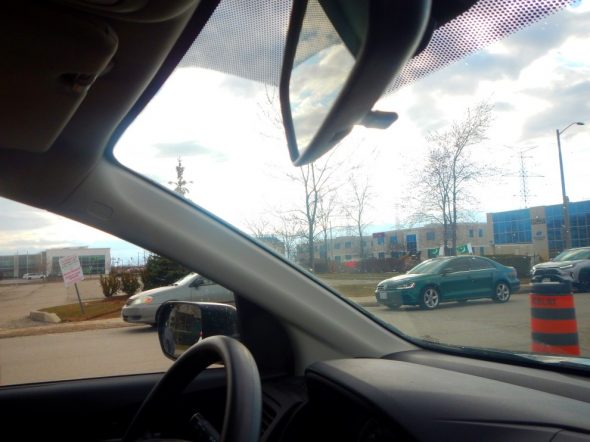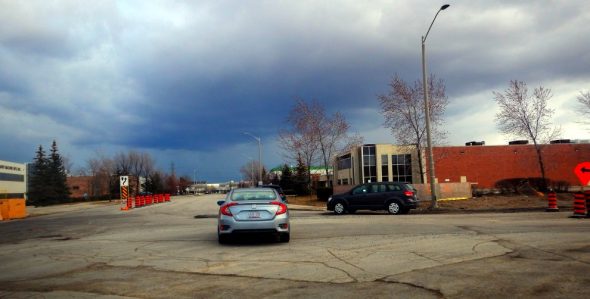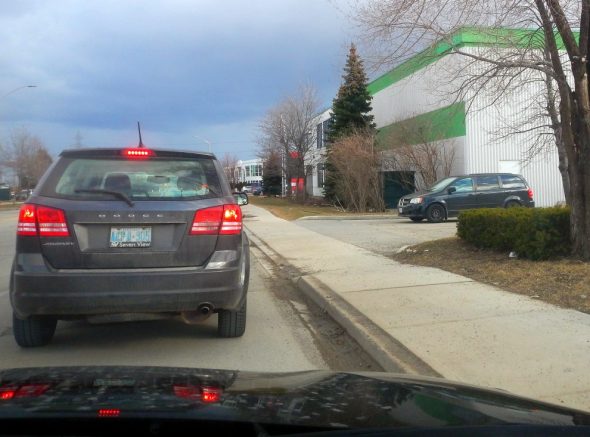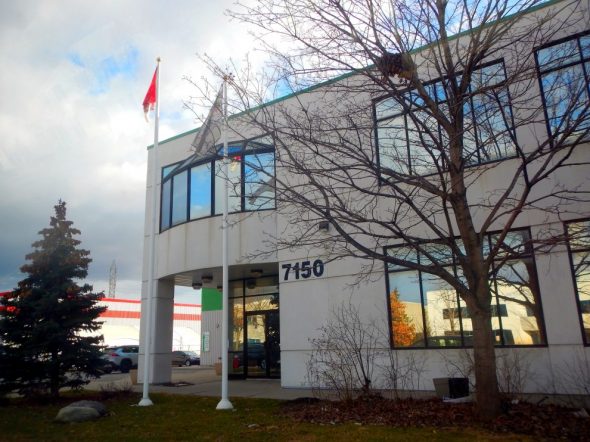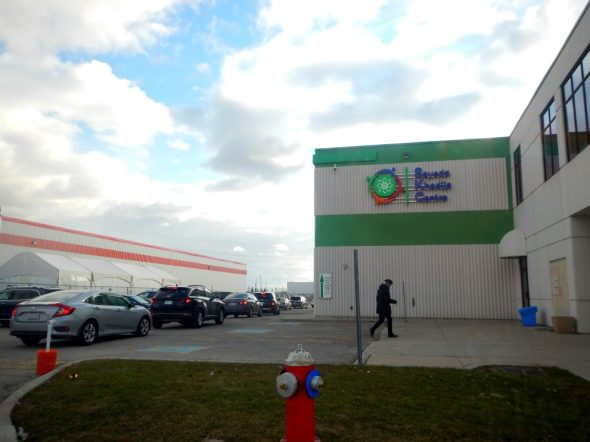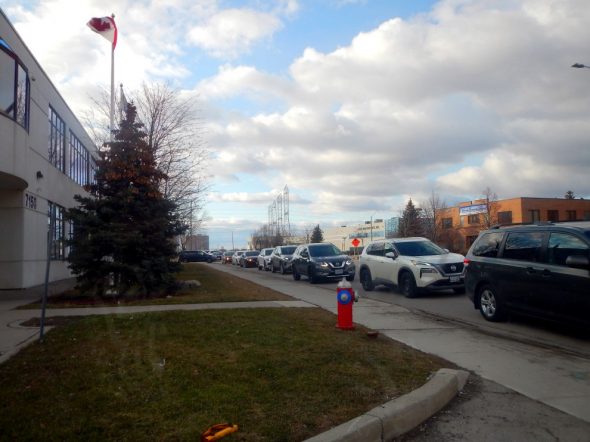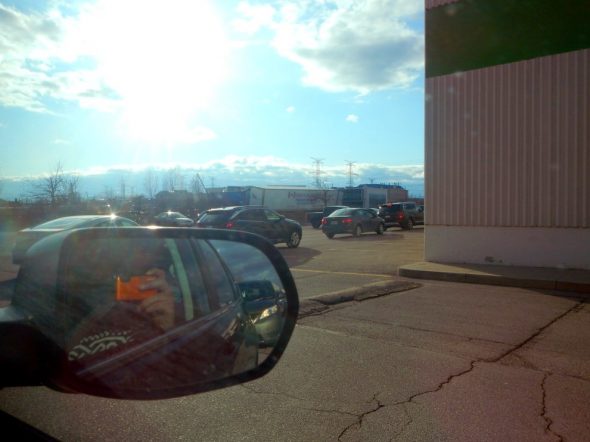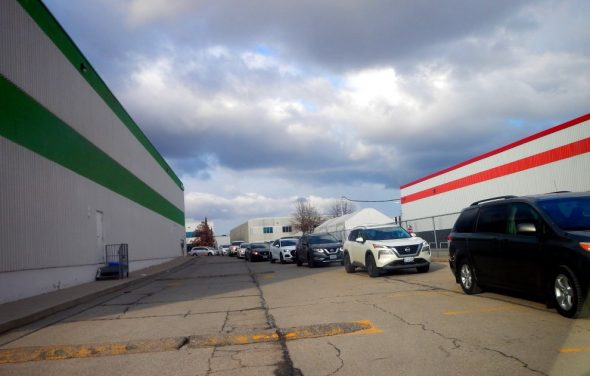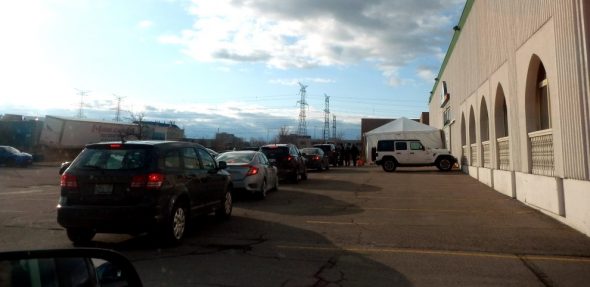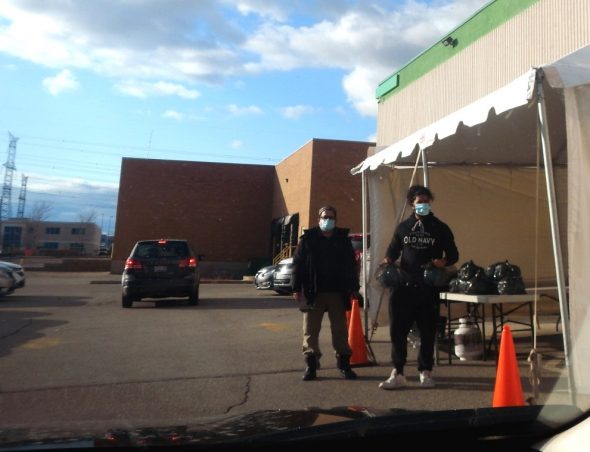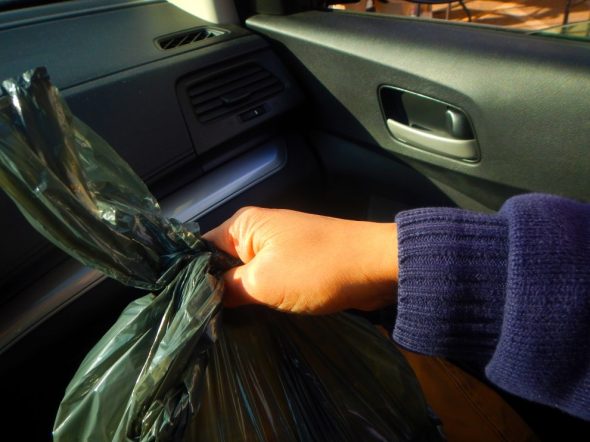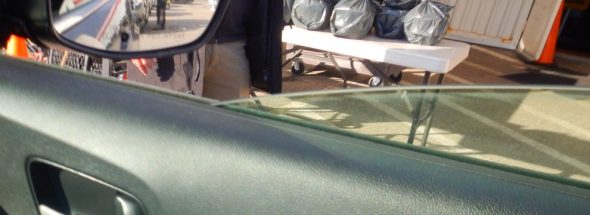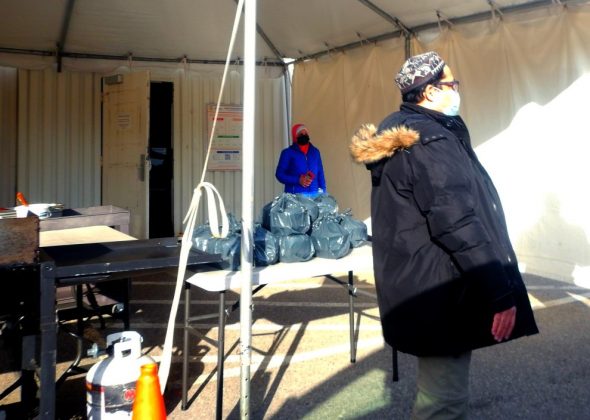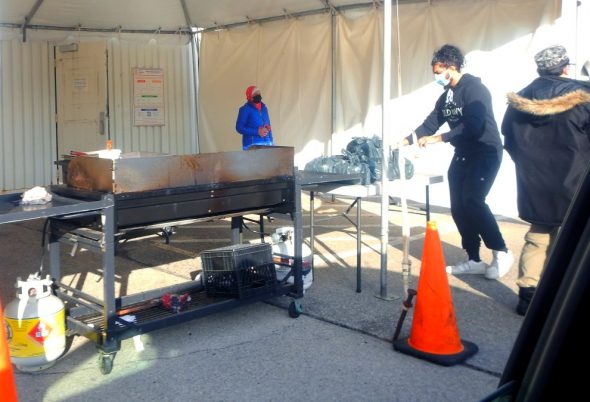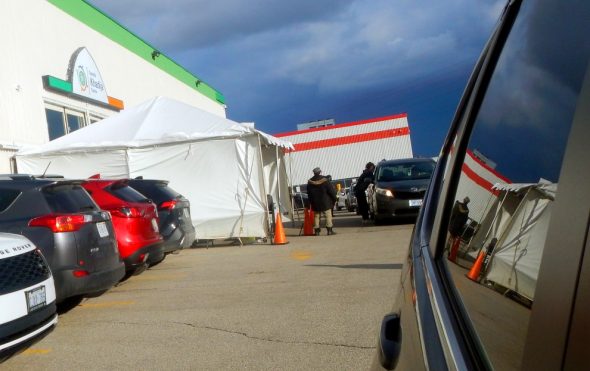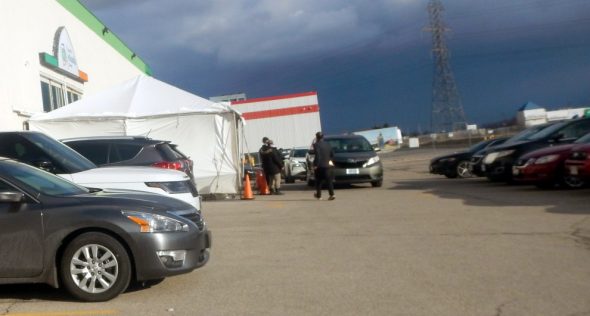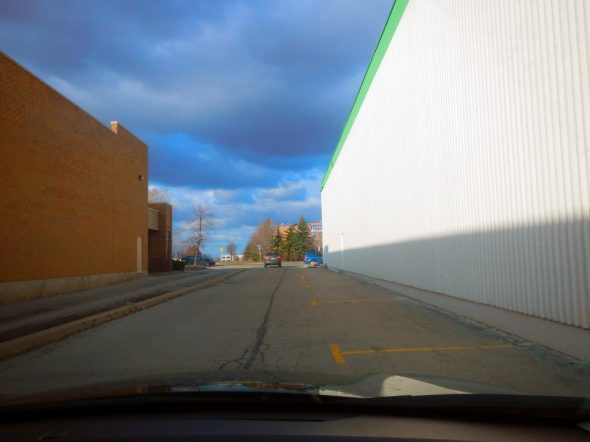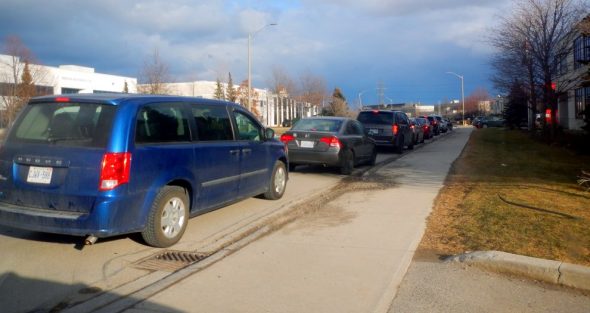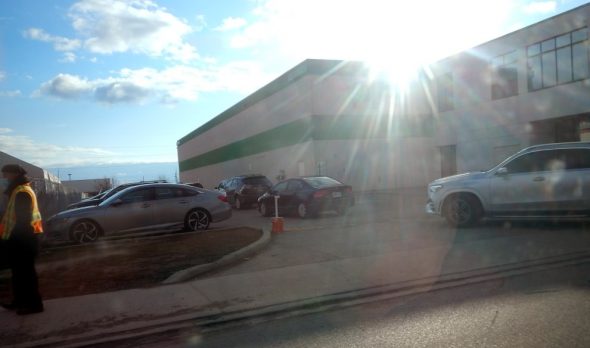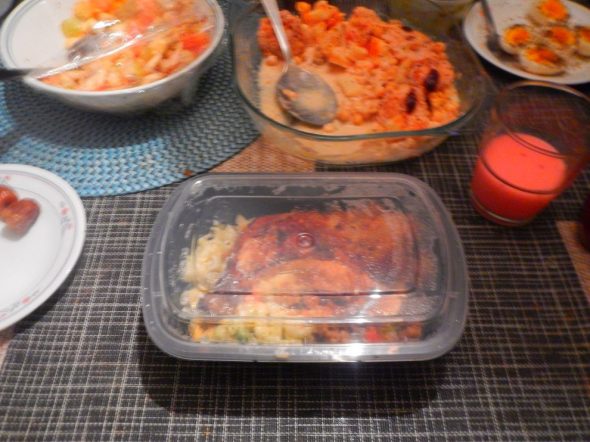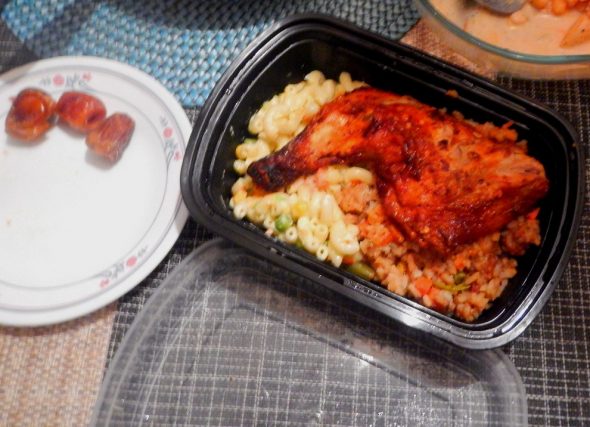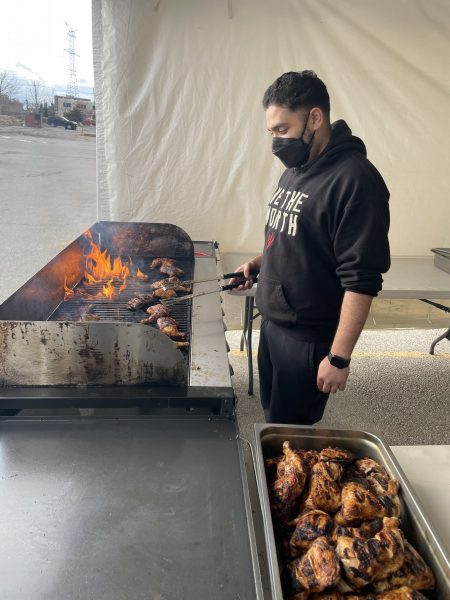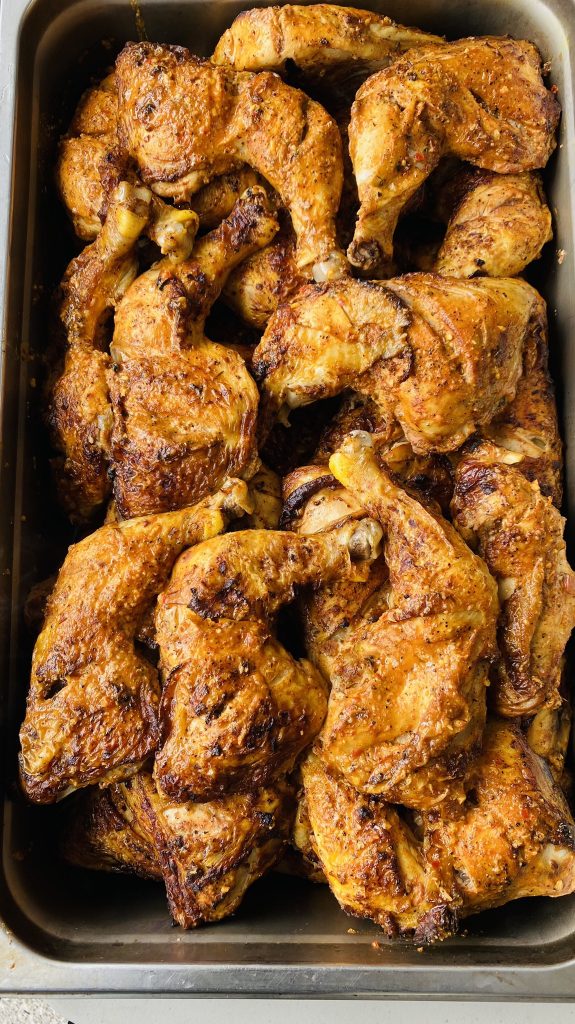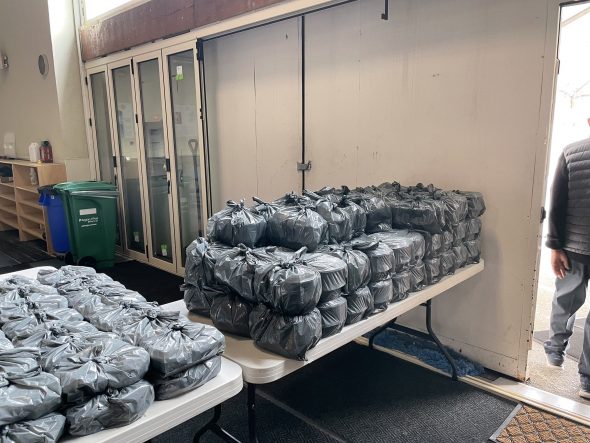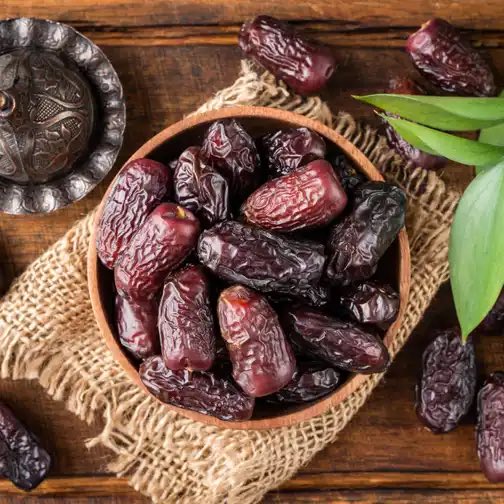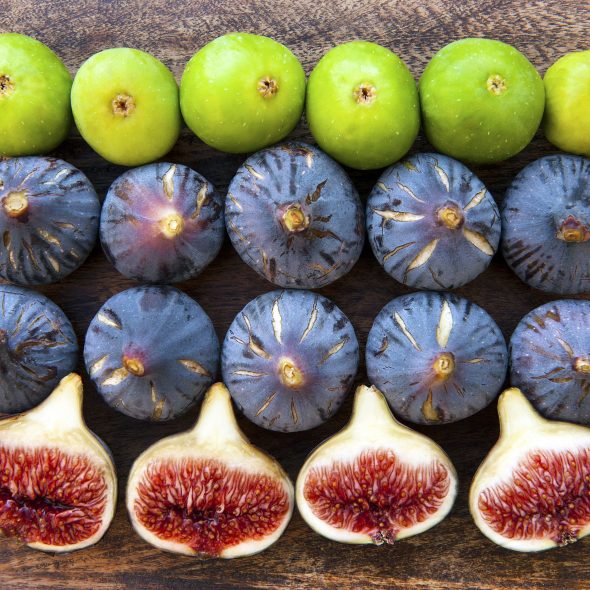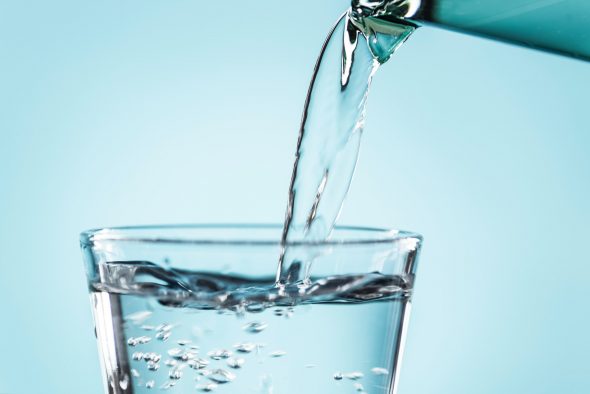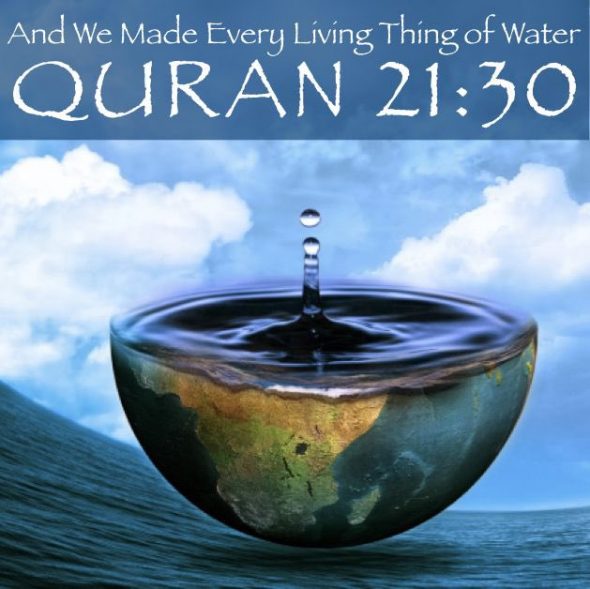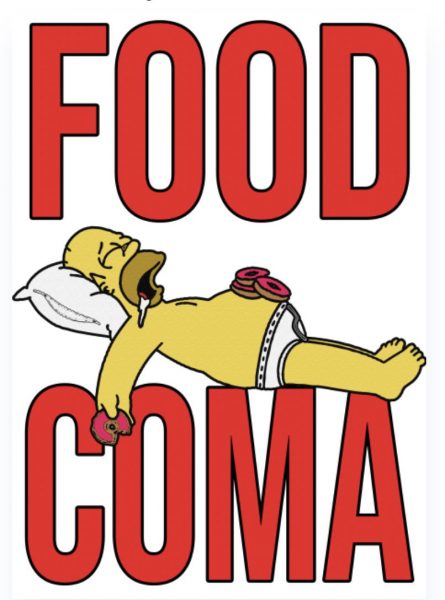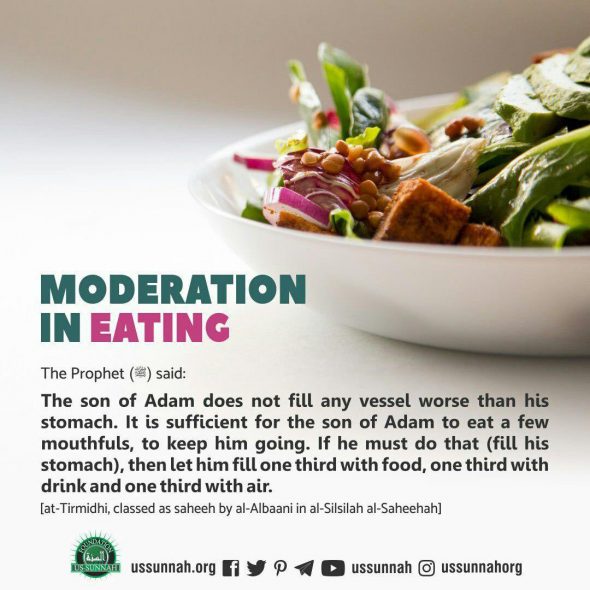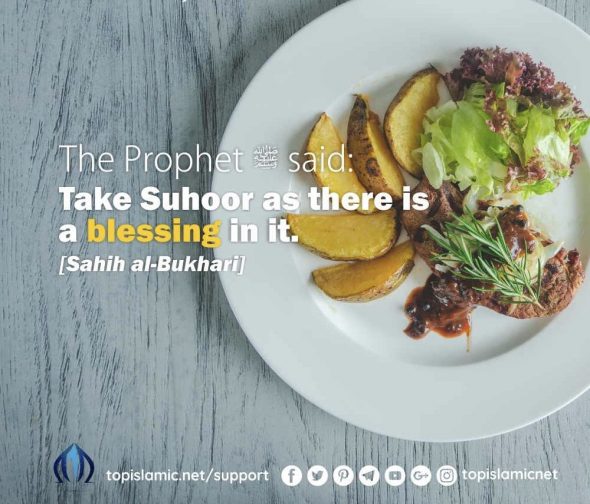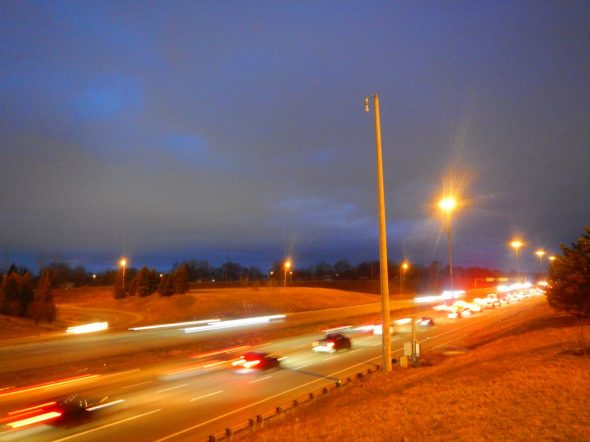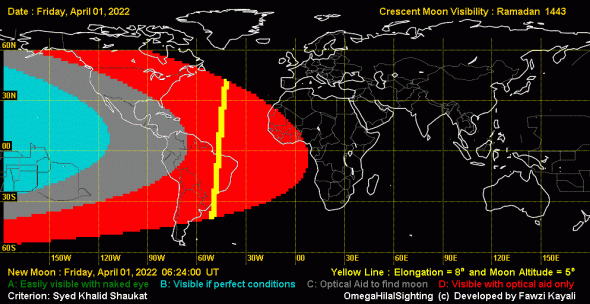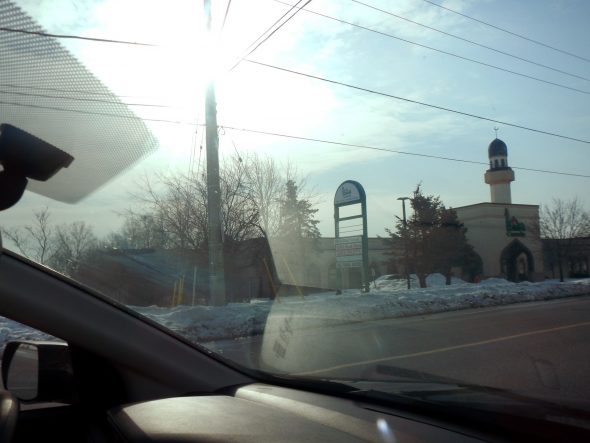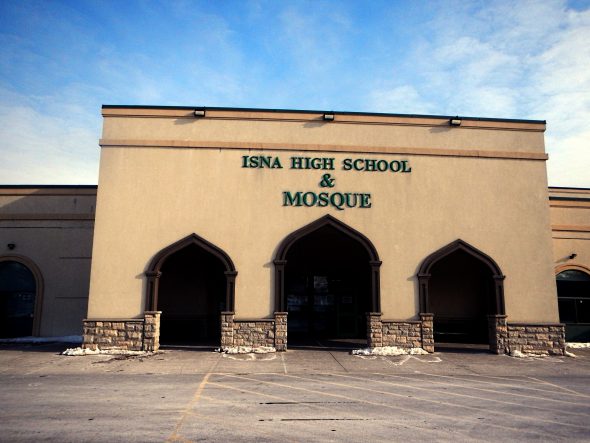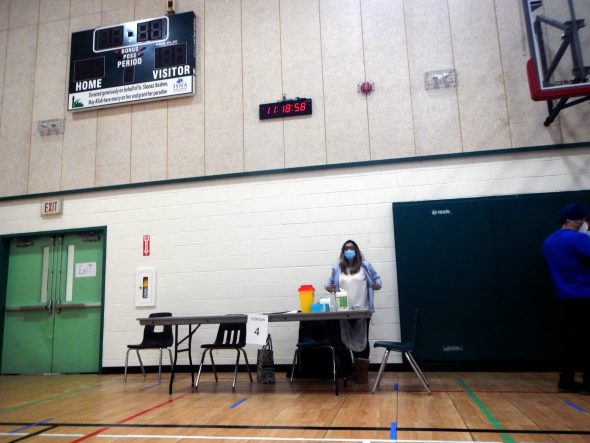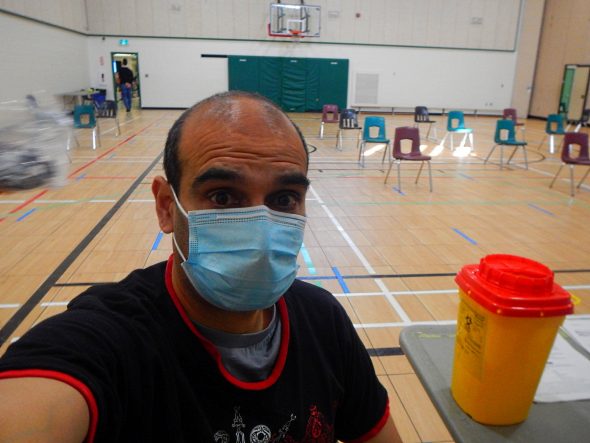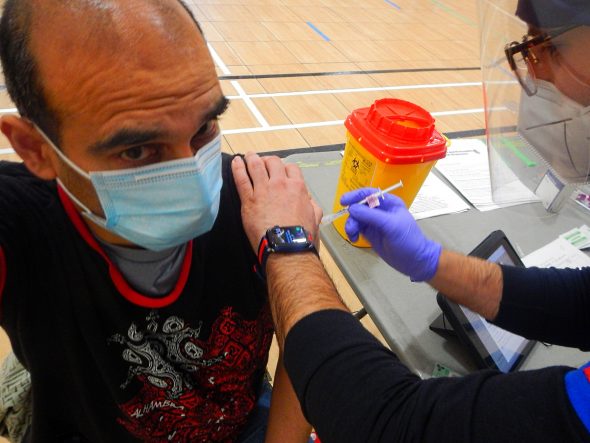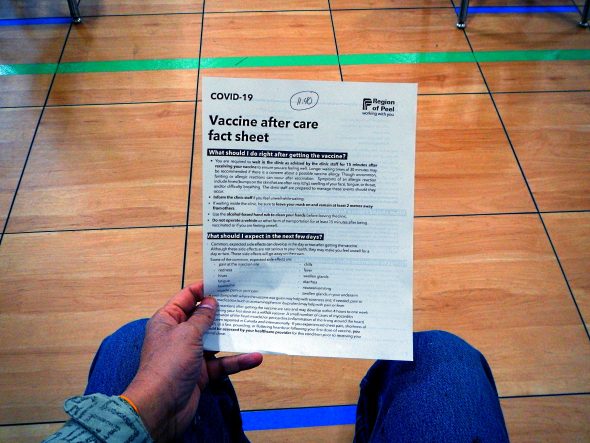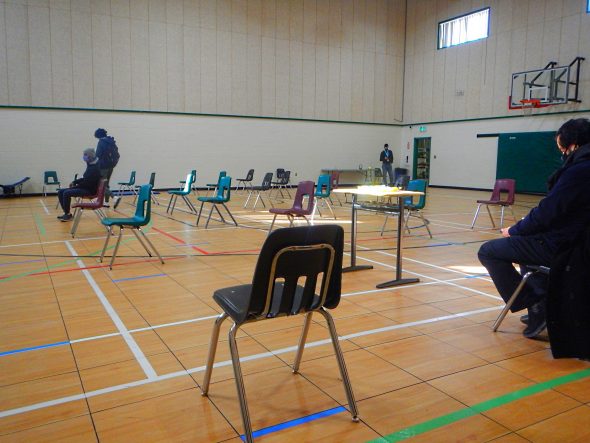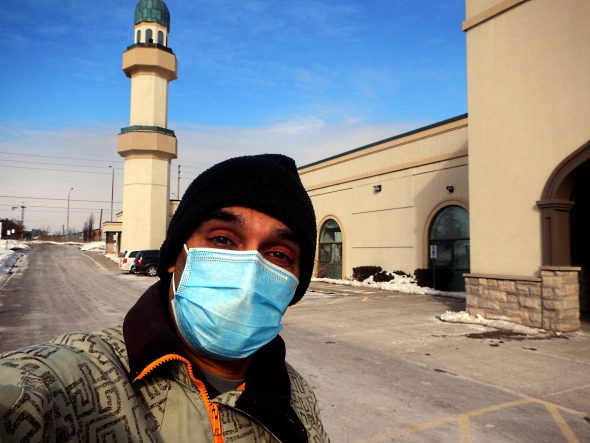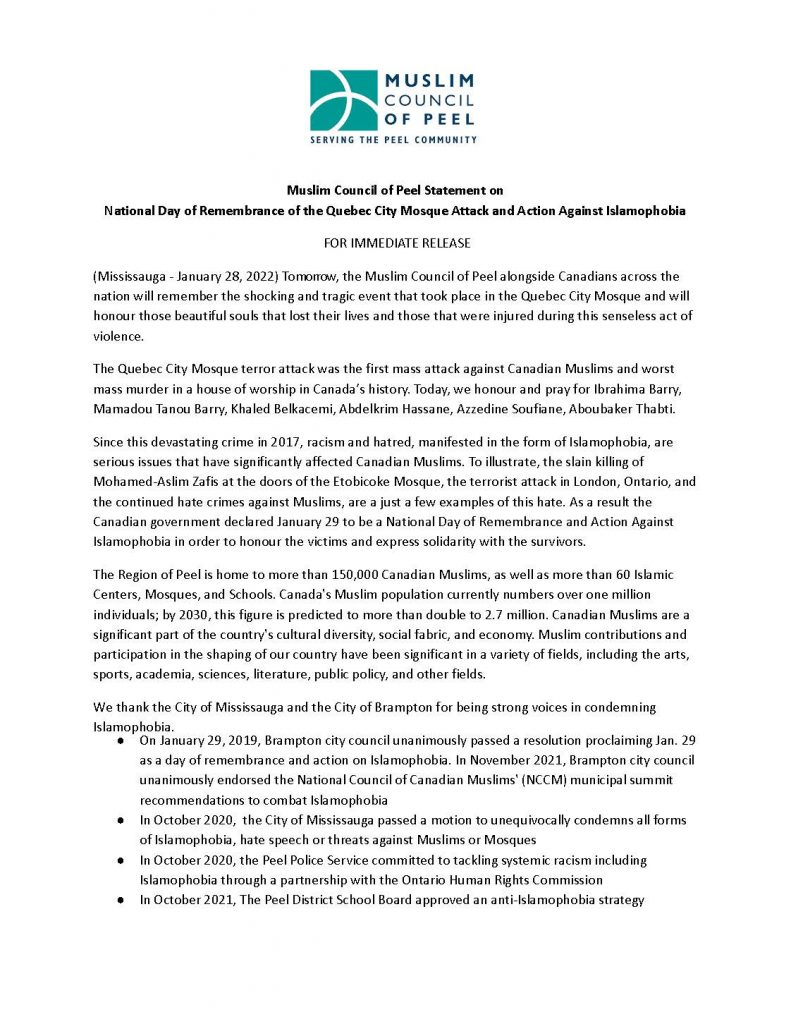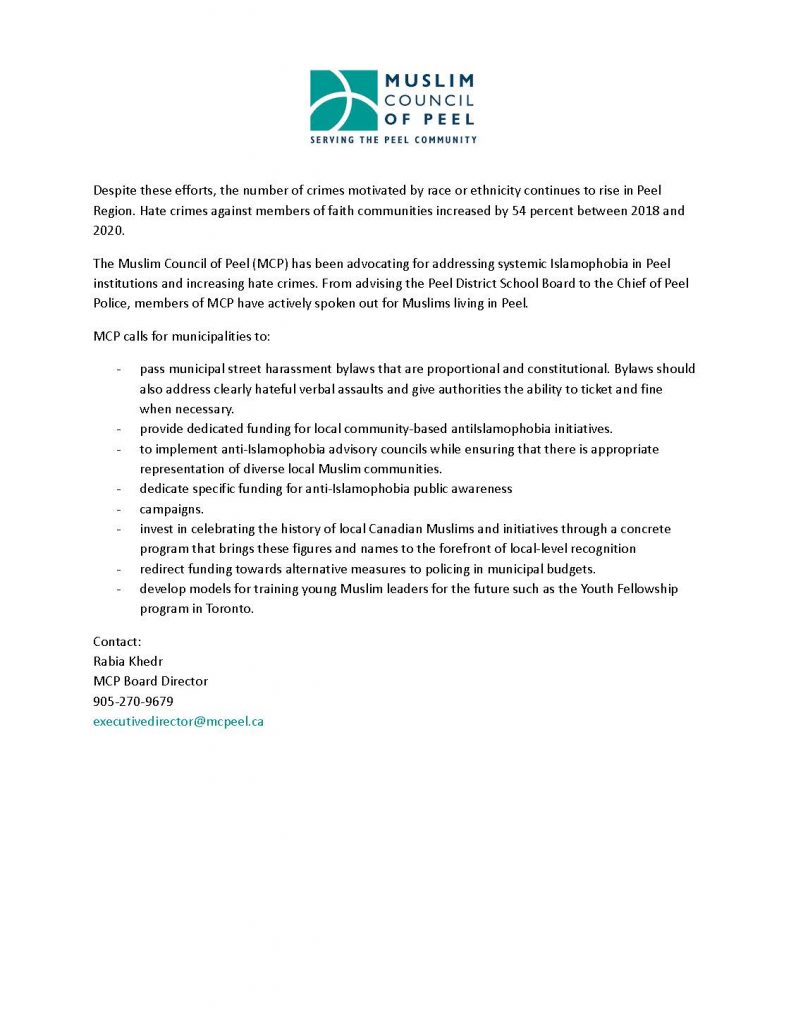
We’re doing something tonight that we haven’t been able to do for two years…
Attend a Masjid on a Saturday Night for an in-person Iftar Gathering and Taraweeh Prayer.
The Masjid for tonight’s Day 1 blogging of 30 Masjids in 30 Days of Ramadan 2022 is Sayeda Khadija Centre in Mississauga, Ontario.
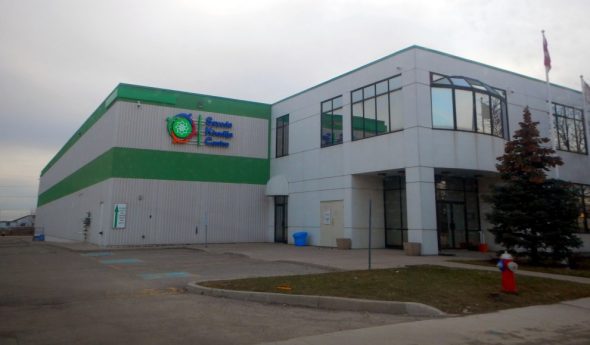
During the Pandemic, our family decided to choose SK Centre as our primary masjid.
So as we ease into visiting different masjids, and do Iftars at different places, and blogging about them, this is where we start.
And to do that, we had to pre-register for a select number of available in-person iftar meal tickets.
No physical meal ticket, rather that ubiquitous QR Code most everyone has become familiar with during these past two years.
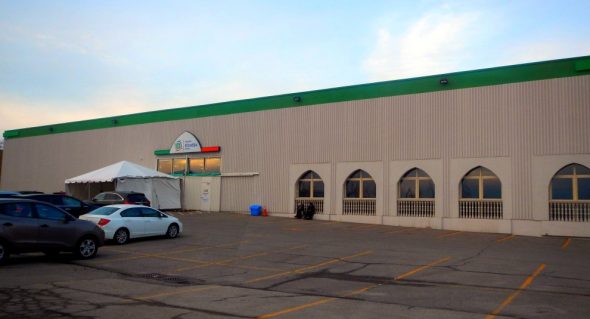
Alhumdullilah, we’re early enough to earn our choice of parking spots.
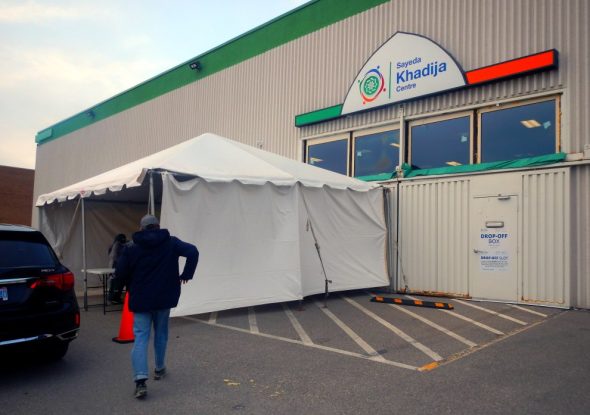
For people who couldn’t pre-book an Iftar meal ticket, Sayeda Khadija Centre still offered up Drive-Thru Iftar Meal pick-ups.
Drive-Thru Iftars are Friday and Sunday only on a first-come first-served basis.
While Saturdays are both in-person pre-booked Iftars, plus drive-thru Iftar pick-ups.
It took the Pandemic Lockdowns to make Remote Working from Home normal, which means Remote Working and Hybrid Working is something Society is keeping post-pandemic.
Likewise perhaps are Drive-Thru Iftar Pick-ups at larger Masjids.
They made sense during the Pandemic when masjids were locked down to the public.
At least tonight for people who missed out on booking an Iftar Meal Ticket, the pick-up still makes sense.
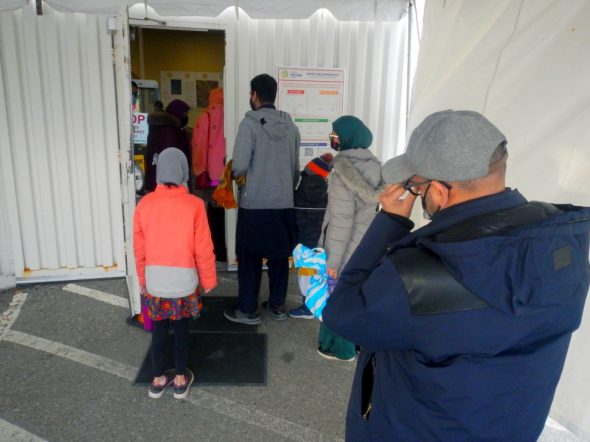
Tonight though, Alhumdulillah we’re walking inside.
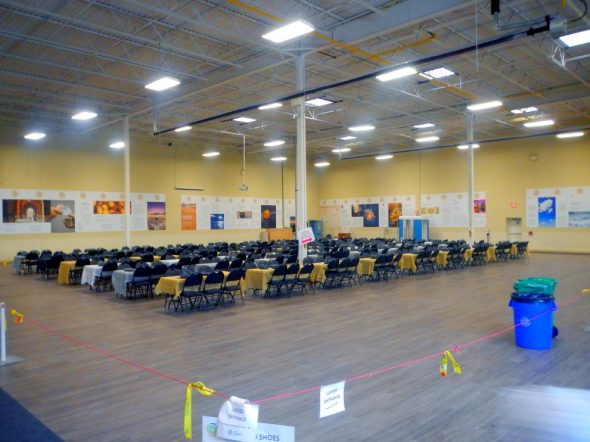
The Iftar table seating arrangement is still not 100% of the building’s true capacity.
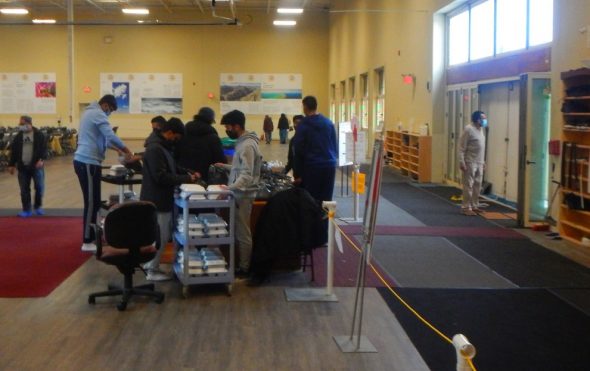
These brothers are handling the Drive-Thru Iftar Pick-ups for this evening.
Meals are prepared in the kitchen, here the food-filled containers are being bagged two at a time, before being walked over, outside and into the hands of people waiting in their cars.
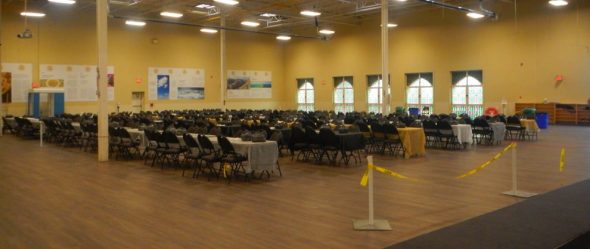
Hard to see in this image, but colourful Islamic Geometry has been added to the windows in the south-west corner wall.
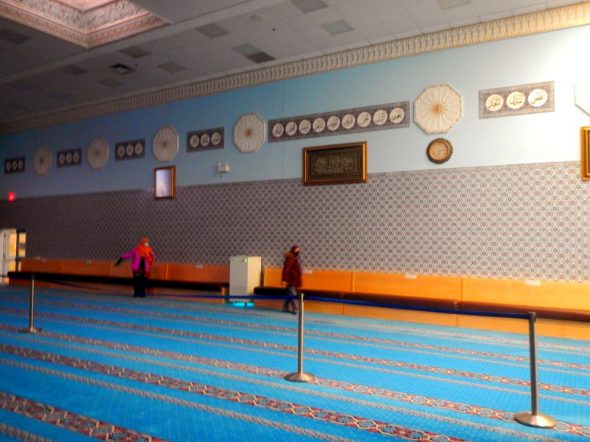
Yep… we’re early. This is the sisters’ side of the prayer hall.
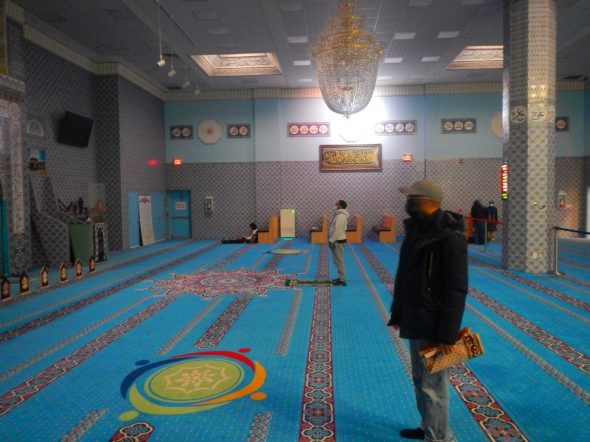
As we entered the primary prayer hall, the lights were off.
Natural light flooding in through square skylights on the ceiling illuminated the masjid, though it was still rather dark.
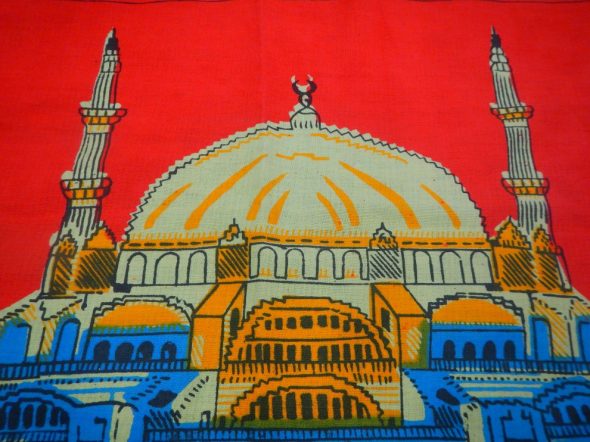
This is my prayer mat I brought today.
It has a design of dome atop what looks like a representation of Turkish Architecture.
Domes serve three purposes when it comes to Masjids.
They are a technology that allows the voice of the speaker at the front of the Masjid Hall to project via measured acoustics so what is being said can easily be heard by everyone sitting anywhere inside the building.
This was before microphones and loudspeakers were invented.
Domes as sound systems were state of the art for centuries.
A second purpose of dome design brings us to the arch shaped windows circling the base of the dome where it meets the roof above the prayer hall.
Those windows allow in the maximum amount of natural light no matter the time of day, nor the time of year with the sun being wherever it is.
The entire prayer hall will have year round, free daytime lighting, to illuminate the inside of the masjid.
Sayeda Khadija Centre has no dome. It has skylights.
It also has electricity, which a masjid volunteer used to power on the lights, after a few minutes.
Domes are also for identity, the third of its purposes, still employed today.
Spot a dome along a city’s skyline, and it’s most likely a masjid, which means a local Muslim community is present.
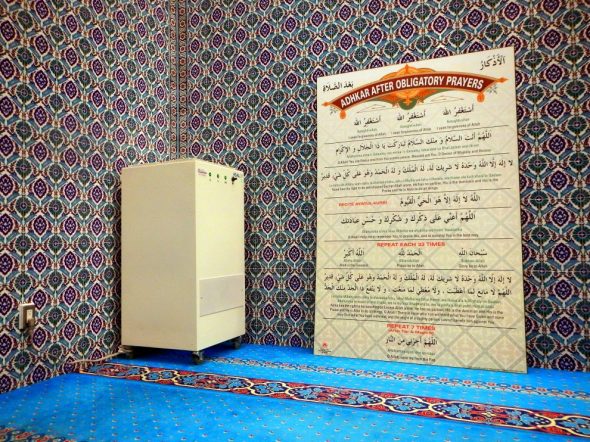
Everyone wants the Pandemic do be done with. But it’s not done with us just yet.
Volunteers came and turned on this air circulation filter.
I noticed the noise of the machine, but the sound became ambient within moments and I forgot it was there soon enough.
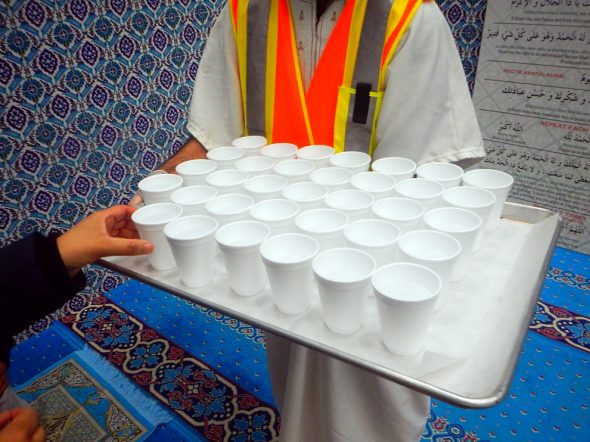
Approaching Iftar time and cups of water are brought to us by volunteers.
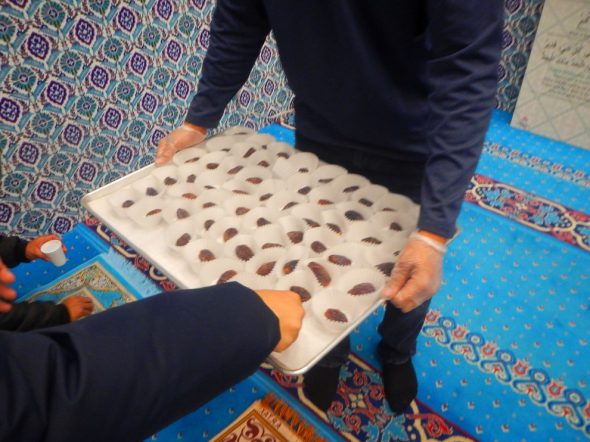
Dates too, with which to break our fast in a few minutes.
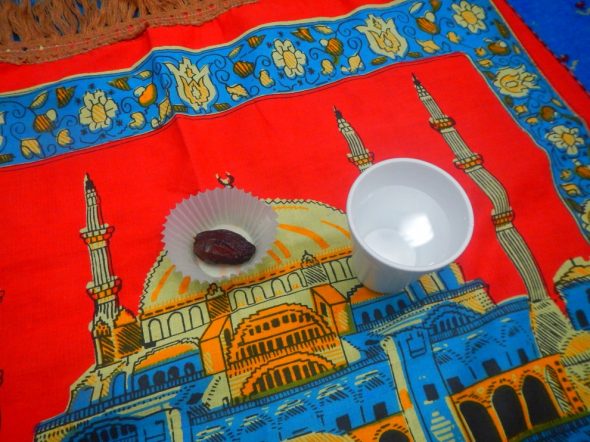
Iftar for tonight : Date and a Cup of Water.
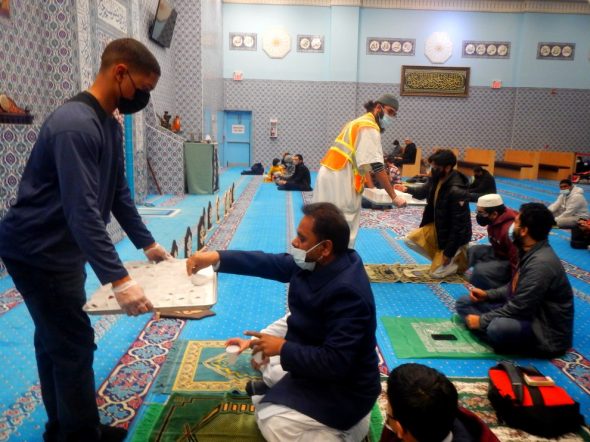
Dates and Cups of Water for all.
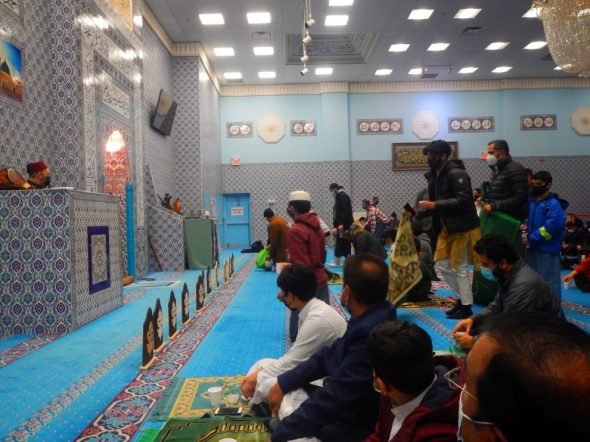
We’re all still wearing masks.
Why?
Because many Elders within the congregation wished to attend Iftar, and Isha, and Taraweeh.
Everyone wearing masks allows a more safe masjid environment for our elders.
Imam Dr. Hamid Slimi welcomes everyone and then recited some verses from the Qur’an as sunset time approached, then went over a few COVID-19 protocol housekeeping reminders.
Adhan Al-Maghrib, The Call to Prayer after Sunset, and time to break the fast.
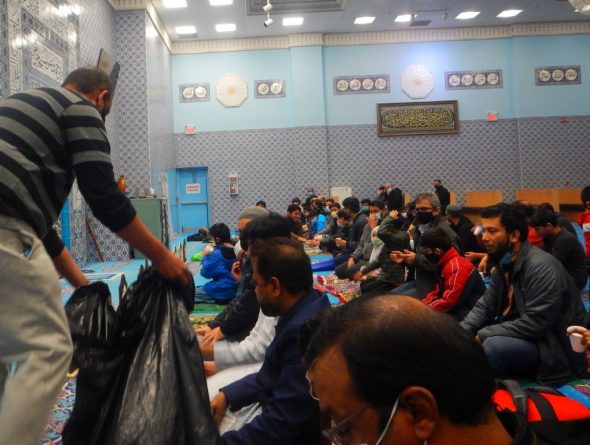
Volunteer quickly serpentines around those lines of people, collecting our now empty cups.
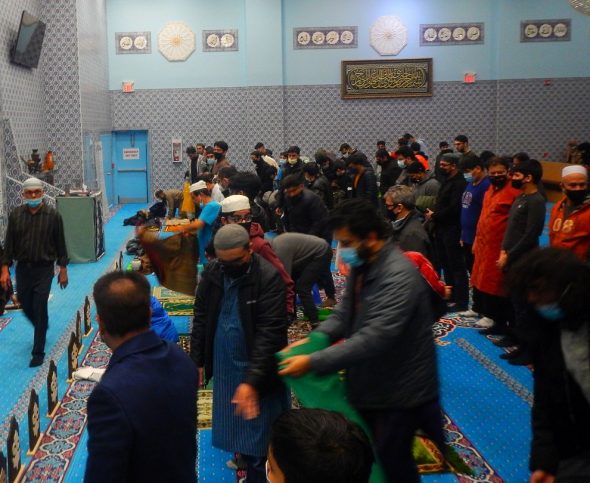
Lining up for Salat Al-Maghrib, not quite shoulder-to-shoulder, but far from being six feet apart.
Progress!
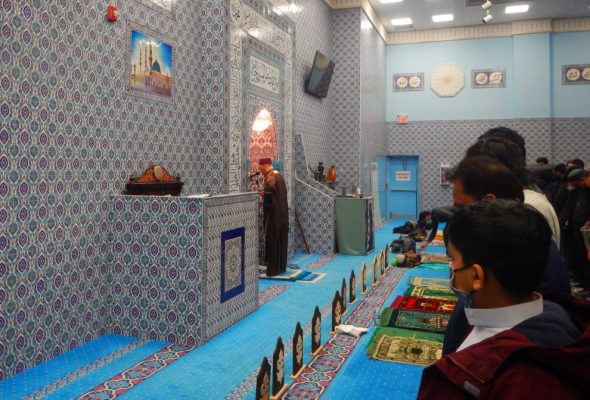
Imam Dr. Hamid Slimi leads tonight’s Salat Al-Maghrib, The Prayer after Sunset.
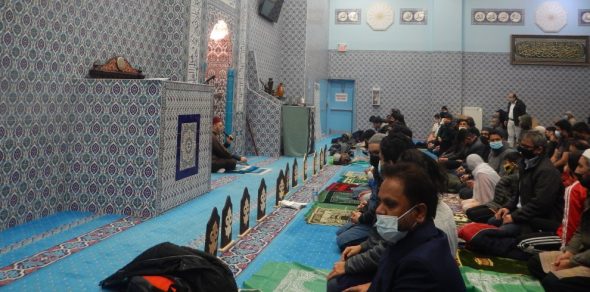
Prayer complete. Almost time to Eat.
Imam Slimi reminds us Ramadan is about The Fast more than The Feast.
He also informs us that tonight they are short 15 volunteers.
Some volunteers have COVID, while other volunteers have family members who have contracted COVID, so as a precaution, those volunteers while symptom-free, also stayed home tonight.
A reminder that COVID is still a thing out there, and we all need to keep wearing our masks while inside the masjid.
Also being down so many Volunteers, Imam Slimi hints we should be patient with any shortcomings in tonight’s Iftar Dinner Program.
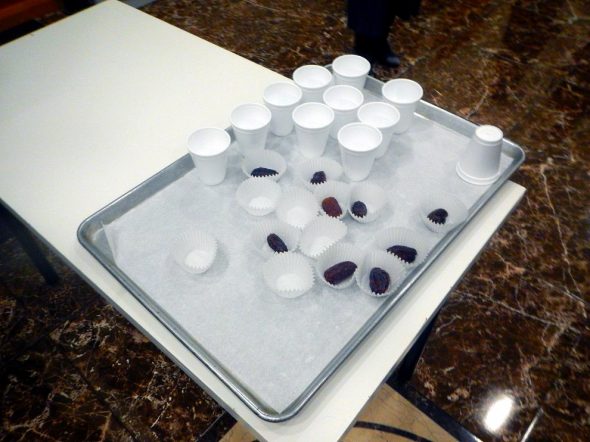
While winding our way from the Prayer Hall to the Meal Hall, spot this tray of cups of water and single servings of dates.
The usual site seen at any masjid’s entrance around Maghrib time.
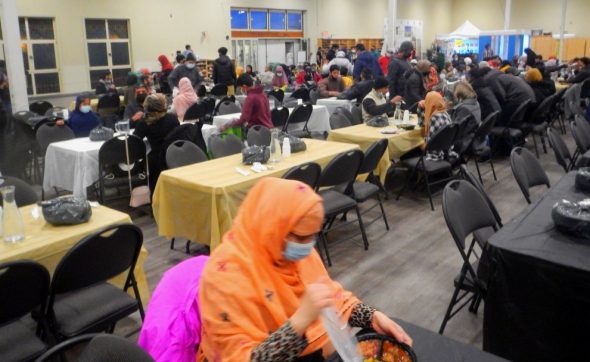
Kind of smart how they did this.
The tables already have carafes of water plus cups.
Many tables also have two bags containing two Iftar dinners each.
These look to be the same Iftar Dinner bags which were being handed out earlier during tonight’s Drive-Thru Iftar pickups.
Other tables have different looking Iftar Dinner Trays, and the food is different.
I ask one of the volunteer how many meals were prepared for tonight?
If I heard correctly, there were 322 booked meals for tonight.
A combination then of surplus pre-bagged double Iftar Dinners from the Drive-Thru, and topped up with additional Iftar Dinner trays prepared shortly before Maghrib.
Minimizes the potential for food waste.
One of those logistical details that are important and needs to be understood and used.
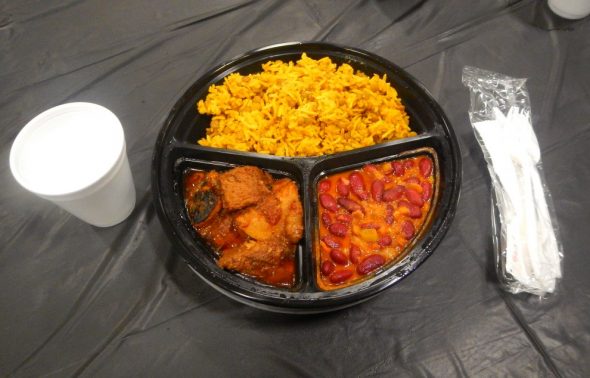
Of those 322 Iftar Dinners prepared tonight, this one was mine.
Looking around, it feels like there are way more people here.
That feeling might be because this is my first In-Person Iftar Dinner inside a Masjid during Ramadan after two years of Lockdown.
…Bismillah…
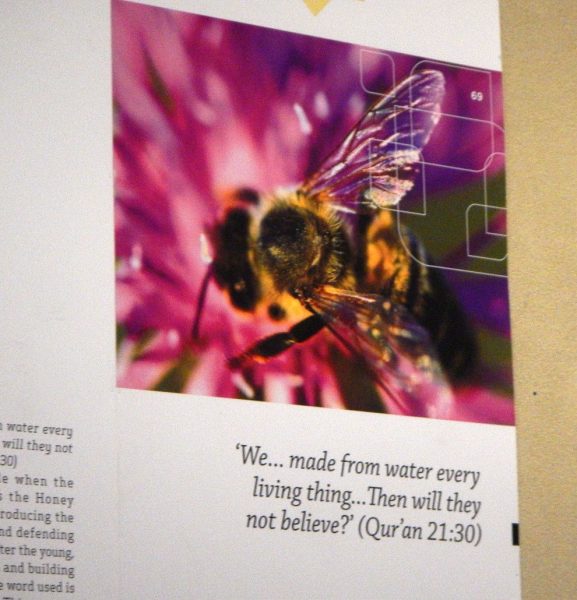
The general purpose hall, which tonight is transformed into the Iftar Dinner Hall, has giant information posters on along the four walls.
From my table, I spot this poster with a verse from the Qur’an about water.
‘We… made frrom water every living thing…Then will they not believe?’
(Qur’an 21:30)
I reflect upon the verse as I consider the carafe of water on our table…
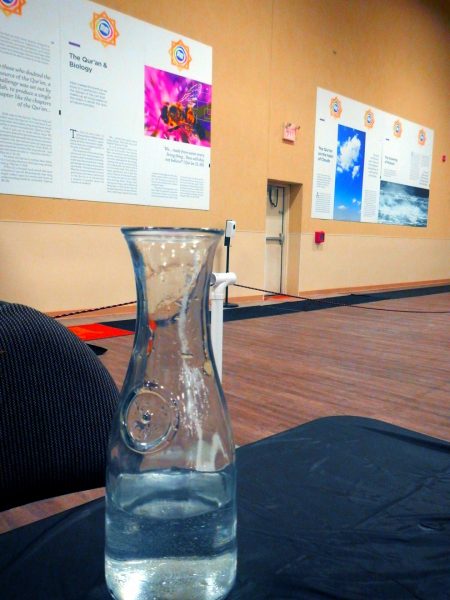
Is the carafe half full? Or is the carafe half empty?
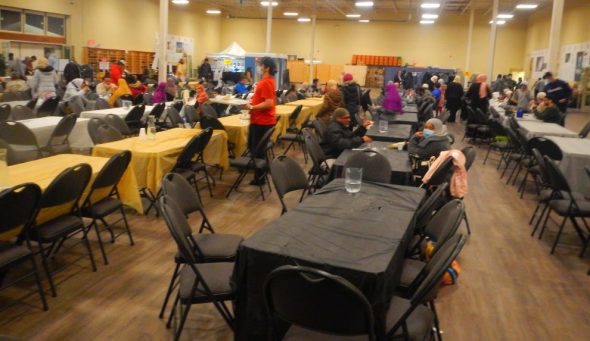
That interstitial time after finishing Iftar Dinner and before getting up to prepare for Isha Prayer.
I decided to just sit and be grateful that I can. Be able to sit inside a Masjid after a public group Iftar.
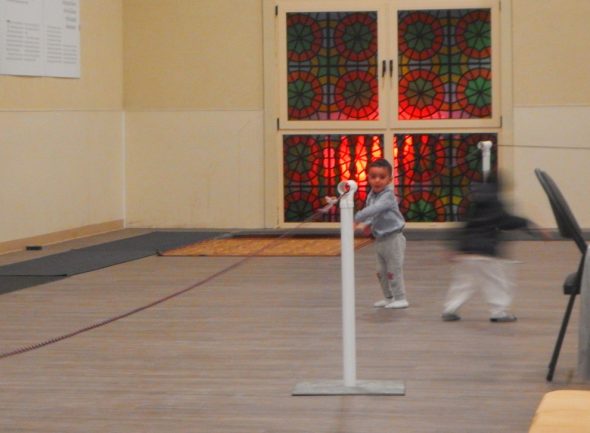
These little kids, there were three of them, were playing nearby.
I watched as they made up some kind of game of running towards the rope line, going underneath it, then running again.
They kept doing this, laughing and smiling. Racing. Sort-of. Laughing and smiling. And screaming, the way that little kids are always randomly screaming.
I wonder what will these children remember of their childhood Pandemic Ramadans ?
Will they only remember the happiness of being able to run around and play after Iftar inside the Masjid hall?
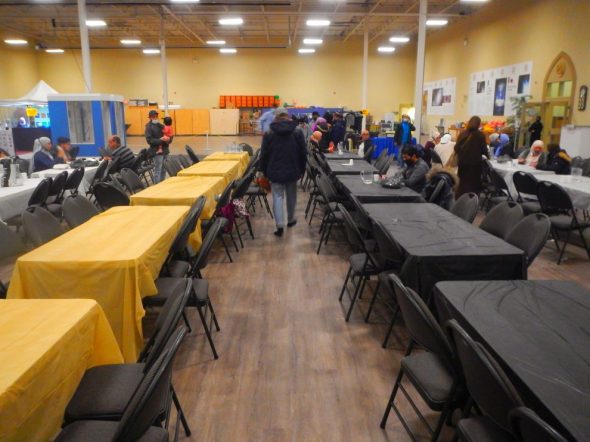
Isha is close enough now, we start to head into the prayer hall.
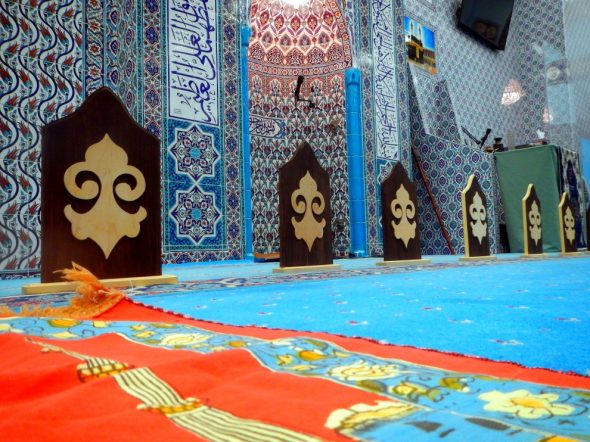
Again, we enter the prayer hall early enough, we get to choose where we sit.
So why not sit to the left side of where the Hafeez will be sitting during tonight’s Taraweeh?
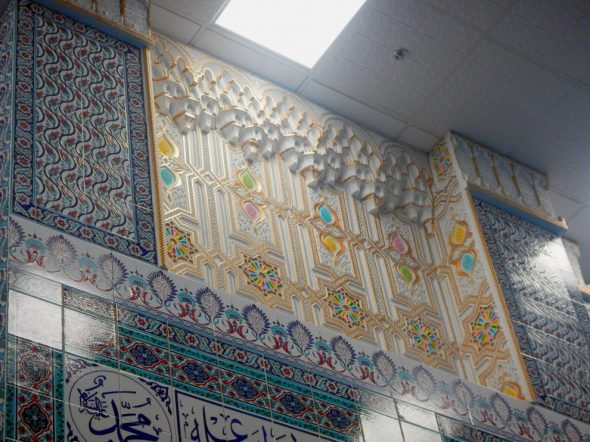
Looking up above the Mihrab, we see Islamic Geometry, filled with four pastel colours, and outlined in tints of gold.
When I first visited Sayeda Khadija Centre ten Ramadans ago on Day 23 of Ramadan 2012, this painted pattern of Islamic Geometric design was painted in white only.
I always wonder and marvel when I look up at it now, and remember when it was all white.
Someone had to paint this by hand.
Wonder who it was?
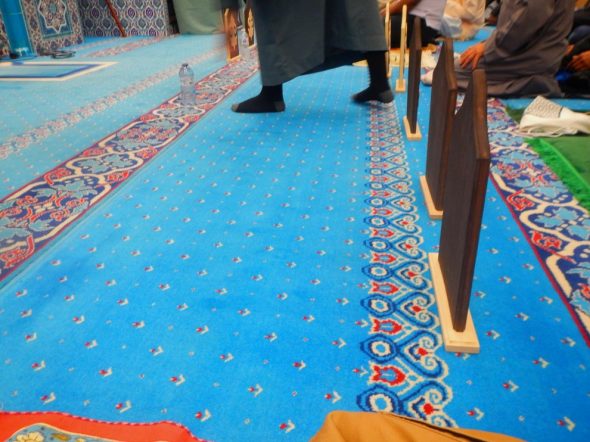
These are the four prayer spots reserved for tonight’s Hafiz. Students from the Masjid’s Qur’an memorization program.
I ask the Hafiz immediately to my right how they make up the schedule?
The first two Hafiz will lead six rakats (units) of Taraweeh Prayer each.
The final two Hafiz will lead four rakats of Taraweeh Prayer each, totalling twenty in all.
Welcome and Ramadan Kareem shared before Salat Al Isha, The Night Prayer begins.
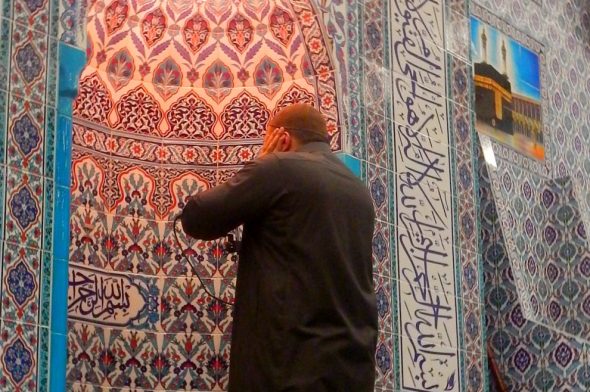
Adhan Al Isha, Call to The Night Prayer.
Adhan Al Isha, Call to The Night Prayer.
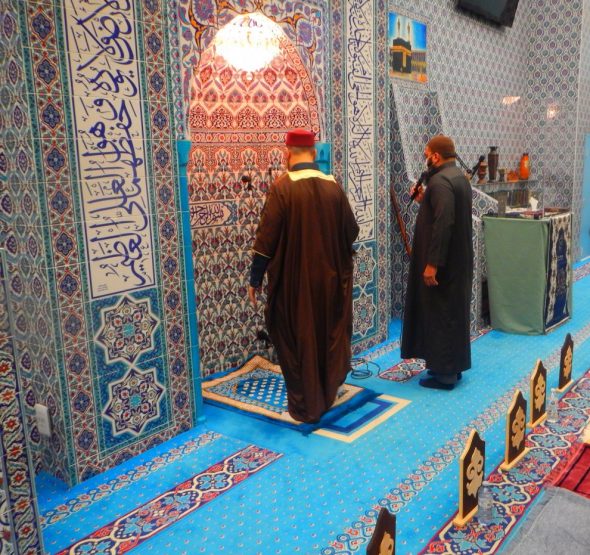
Salat Al Isha, led by Imam Dr. Hamid Slimi.
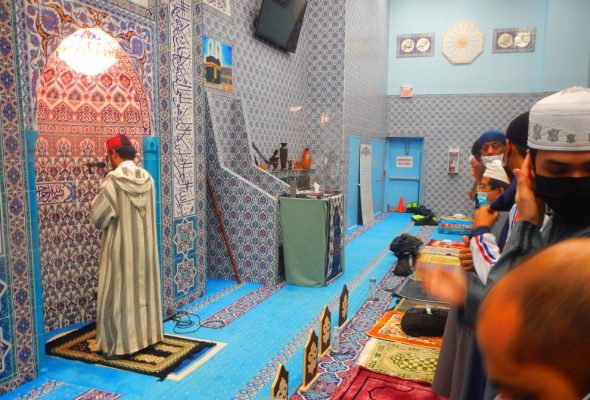
Taraweeh Prayer begins, the first of twenty rakats of nafil prayers.
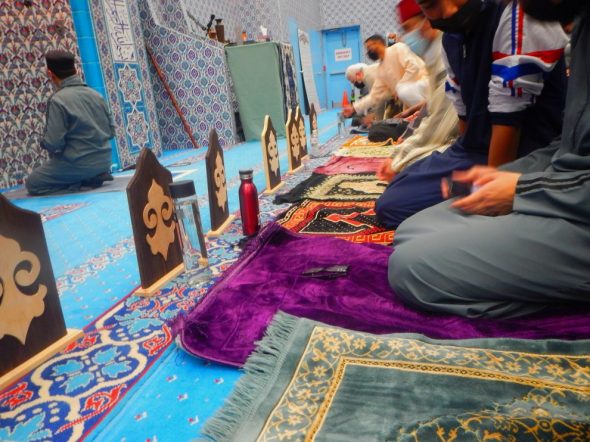
After six rakats, the second Hafiz for tonight is leading the first of his six rakats.
Around this Tag-Team-Taraweeh Hafiz handover, is when I began feeling a little overwhelmed.
Perhaps it was being around so many other people praying, close up, not quite shoulder-to-shoulder, but in very close proximity, after having avoided so many for so many months.
More than months, make that two years.
Reminded myself to be grateful that we can gather at all after being deprived from doing so these past two Ramadans.
Even this uncomfort of mine was a Mercy and Blessing which was not possible since Ramadan 2019.
How many favours of My Lord am I denying ?
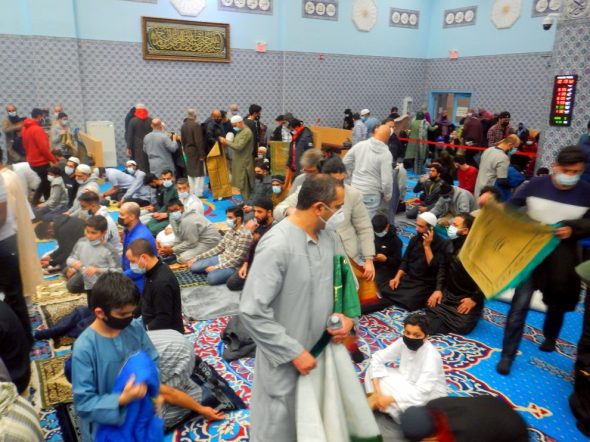
After eight rakats, many people are happy and satisfied, and begin to exit the prayer hall.
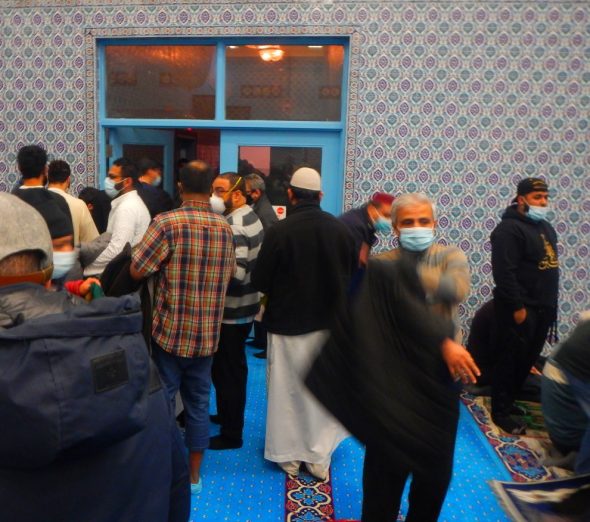
My brother and I also exit, satisfied with having prayed eight rakats on this first Masjid visit of Ramadan 2022.
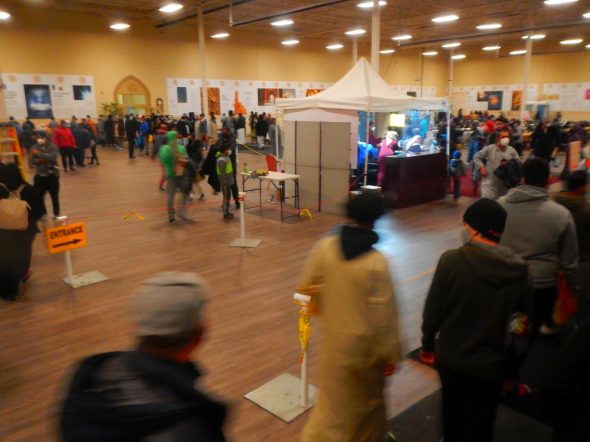
That joyful exiting experience where everyone is patient, talking, meeting, making donations.
All while still wearing masks.
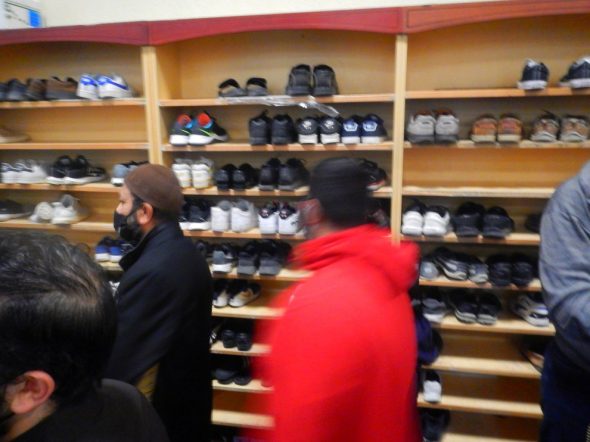
Something not seen since Ramadan 2019 : Shoe racks filled with shoes.
During the Lockdown Ramadans, these shoe racks would remain mostly empty, as strict capacity limits needed to be observed.
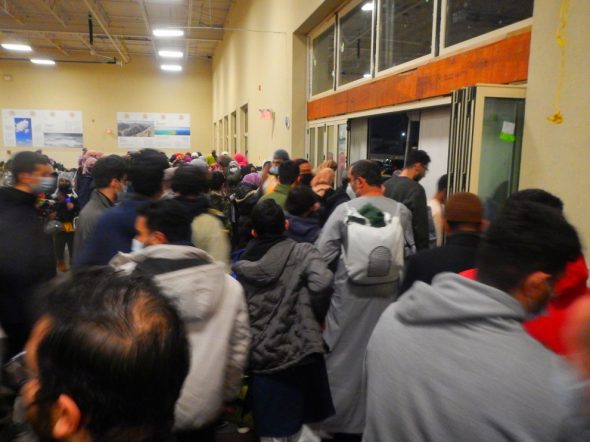
During the pandemic, Sayeda Khadija Centre installed these new sliding glass doors, which were kind of used tonight.
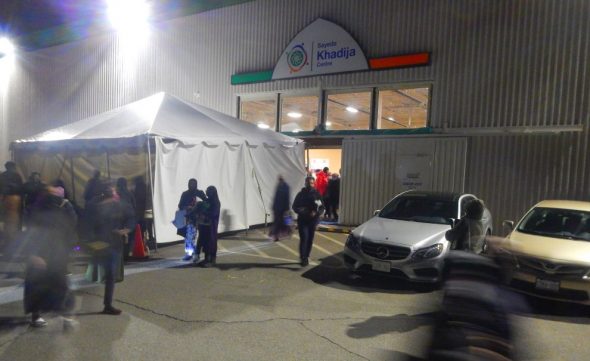
The new sliding doors were partially opened, and allowed us eight-rakat-taraweeh-ers to exit more easily.
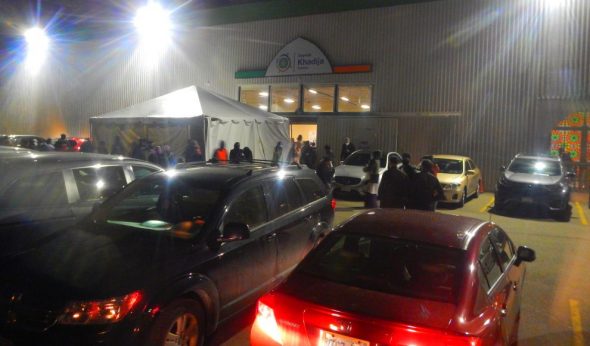
Another scene not seen since Ramadan 2019 ?
Hanging out in the masjid parking lot after Taraweeh.
This too is part of Ramadan Culture for Canadian Muslims.
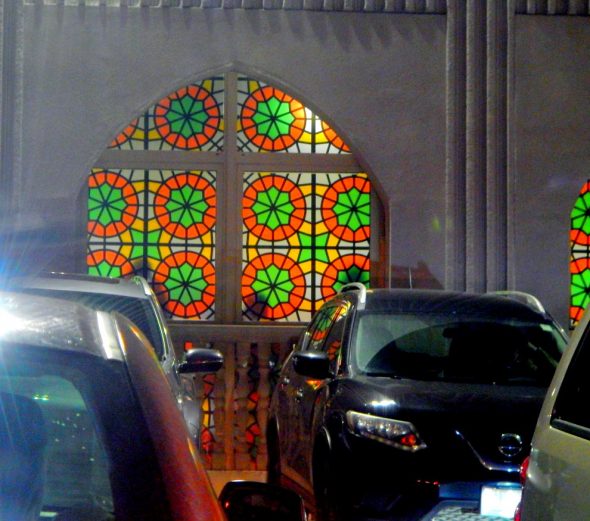
Masjids don’t usually have stained glass.
This Ramadan, Sayeda Khadija Centre has something similar though…
Islamic Geometric Patterns inside the arched windows facing the parking lot.
Maybe these Islamic Geometric window designs will also become part of Canadian Ramadan Culture ?
